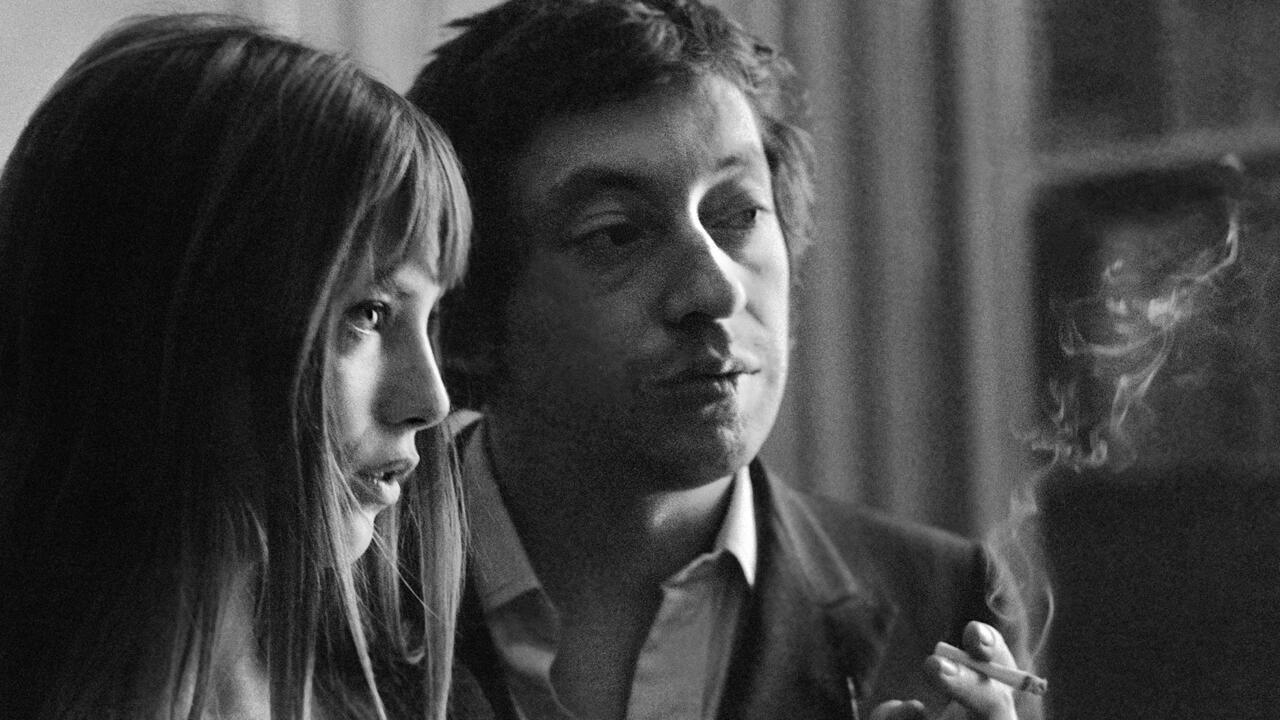
LUXE PARADOX
We explore the intersection of style, accessibility, and social dynamics, driving discourse on the evolving landscape of luxury and the fashion system.
Turning Life Into Lyrics: The Love Song of Jane Birkin
by Thea Elle | June 19, 2025 | Style Guide
Long before the Birkin bag became a global symbol of luxury, Jane Birkin was a voice — in both the literal and figurative sense. Her soft, breathy tone reshaped the soundscape of music. In “Je t’aime… moi non plus,” her 1969 duet with Serge Gainsbourg, she didn’t just sing a provocative song — she created a cultural shockwave. The track’s candid eroticism ignited bans, drew fierce backlash from the Catholic Church, and yet soared to the top of the charts. Rather than ending her career, it etched her into history.
What truly unsettled the world wasn’t just the lyrics — it was the way she delivered them. Tender yet unflinching. Exposed, but never submissive. Her voice carried a quiet defiance, suggesting that a woman could be openly sensual without surrendering her power. The performance fractured societal norms. And at its center stood Jane Birkin.
Yet her legacy transcends that single song, that single partnership, or any singular legend. Her life unfolded like a constantly evolving melody — unrehearsed and unconfined. British by birth, but Parisian in spirit. A fashion icon who mocked excess. A muse who left her own indelible imprint. To tell her story isn’t to list milestones, but to trace a mood — to capture a presence. This isn’t biography. It’s reverence.

The Song That Made the World Blush
“Je t’aime… moi non plus” was never just a song. It was a scandal captured on vinyl, a whisper that turned into a cultural uproar. Released in 1969, the track sparked controversy across Europe for its explicit eroticism. It was banned in Italy, condemned by the Vatican, and rejected by the BBC. Despite the backlash, or perhaps because of it, the song climbed the charts and sold over two million copies by the end of the year. Listeners did not simply hear it. They experienced it. The song felt like a glimpse into something private, something forbidden, and that made it irresistible.
Jane Birkin’s voice floated over the music like a soft exhale. It was delicate, sensual, and strangely intimate. She did not perform in the traditional sense. She simply allowed the microphone to catch something real. Her delivery felt less like acting and more like confession, as if the recording captured a moment not intended for public ears. That quality, more than the lyrics themselves, is what made the song so powerful. She did not shout or seduce. She whispered, and people leaned in to listen.
While Serge Gainsbourg was credited as the songwriter and producer, Birkin’s role was far more than ornamental. She understood how to give herself over to the emotion of the track without pretense. She instinctively recognized that true impact does not always come from loudness or drama. Sometimes, it arrives through quiet honesty. Her vulnerability did not weaken the song. It gave it its edge. In doing so, she challenged long-held ideas about femininity and control. Her softness became a form of strength, and that was the real shock to the system.
If you’re a luxury brand enthusiast on a budget, check out CRIS & COCO! You will only find better deals, with up to 90% off on authentic, high-quality products. Trust our quality satisfaction guarantee and 99 % satisfied customers since 2018 speak for themselves. Take advantage of this hidden gem!
A Woman Beyond the Myth
Despite the attention she received, Jane Birkin refused to be pinned down by one identity. The world knew her as Gainsbourg’s muse and the name behind HERMES most famous handbag. But she was never satisfied with being a symbol. From the very beginning, she slipped past labels and expectations. She moved through fame on her own terms, often barefoot, often in a man’s shirt, never bothering to present a polished version of herself. She made it clear that she had no interest in being the product of someone else’s idea.
Her creative career was both rich and varied. She acted in more than 70 films, often choosing roles that were unconventional or emotionally demanding. She also released over a dozen music albums, many featuring lyrics she wrote herself. Her work spanned decades and was deeply personal. At the same time, she raised three daughters, including Charlotte Gainsbourg, who would go on to build her own legacy in music and film. Birkin was not just a muse. She was an artist, a storyteller, and a mother who left a profound mark on those closest to her.
Her fashion sense, much like her personality, was effortless. She wore simple jeans, loose tops, and straw baskets long before that look became iconic. It was not about making a statement. It was about feeling comfortable. Yet designers and brands continued to chase her image. Even today, her influence can be seen in the campaigns of FENDI, SAINT LAURENT and CELINE. She never followed fashion. She simply lived in a way that made others want to follow her. What made her cool was the fact that she never tried to be.
SHOP CRIS & COCO HERE
The Bag That Tried to Contain Her
It is one of the great ironies of fashion history that one of the most structured and luxurious accessories ever made is named after someone who resisted structure in every way. The Birkin bag, now known as a global symbol of exclusivity and elegance, began with a moment of practical need. On a flight in 1981, Birkin met HERMES executive Jean-Louis Dumas and mentioned how difficult it was to find a bag big enough for her daily life. In response, he sketched a design on a napkin. That sketch became the Birkin bag.
But the woman behind the name never treated the bag like a trophy. She used it as she would any other item. She filled it with everything she needed, let it wear and tear, scribbled notes on it, and carried it everywhere without fuss. For her, it was a container, not a status symbol. When the bag grew into a luxury item with years-long waiting lists and astronomical prices, Birkin distanced herself from the image it had taken on. She even asked HERMES to remove her name from any versions made with crocodile leather due to her concerns about animal cruelty.
While the world admired the bag, Jane Birkin never let herself be defined by it. Her identity was never about luxury or exclusivity. It was about usefulness, individuality, and personal integrity. The Birkin bag may have tried to represent her, but she made it clear she was not interested in being anyone’s brand.
Living Without Apology
Jane Birkin’s life was never curated for public approval. She allowed herself to be seen as she was, not as others wished her to be. As she aged, she did not hide behind makeup or filters. She let her hair gray. She let time leave its mark on her face. She showed up to events in clothes she already owned, often with a quiet smile and little regard for fashion trends. When she experienced tragedy, such as the loss of her daughter Kate Barry, she did not retreat. She remained present, visible, and honest. Her life was not perfect, but it was lived fully and without shame.
She also cared deeply about the world beyond herself. Her activism was not loud or performative. It was steady and sincere. She supported human rights, environmental causes, and humanitarian work with quiet dedication. She traveled with Amnesty International and spoke out for people suffering in places like Bosnia and Myanmar. Her involvement was not for show. It came from a genuine sense of responsibility and empathy. She believed in using her voice, not to elevate herself, but to help others be heard.
In the end, Jane Birkin was more than the roles she played, the songs she sang, or the fashion she inspired. She was a person who lived without pretending, who embraced both joy and sorrow with the same open heart. Her legacy is not just in what she left behind, but in how she lived. Without apology. Without artifice. And always with authenticity.

Jane Birkin at a human rights rally, Paris, 1997
Flawed, Free, and Fully Herself
Jane Birkin’s enduring impact comes from her refusal to chase perfection. She moved through life with lightness, never taking herself too seriously, often laughing, and never hiding the natural passage of time. In a culture increasingly obsessed with image control and polished presentation, her honesty felt quietly revolutionary.
She created room for women to be layered, emotional, and evolving. By embracing complexity instead of hiding it, she helped redefine what it means to be feminine, fashionable, and resilient.
The Woman Who Felt Like a Mood
To remember Jane Birkin is not to list accomplishments or catalog appearances. It is to recall the softness in her voice, the easy joy in her smile, and the rare calm she carried with her. She was not someone who demanded attention, yet she always seemed to hold it. Her influence on style still shapes collections today. Her voice continues to echo in moments of solitude. Her presence is felt in every woman who chooses authenticity over artifice.
She did not leave behind a carefully built brand. She left something less tangible and more lasting — a tone, a rhythm, a presence that resonated deeply. Like a song that lives in memory long after the last note, Jane Birkin is still felt, still heard, and still here in spirit.